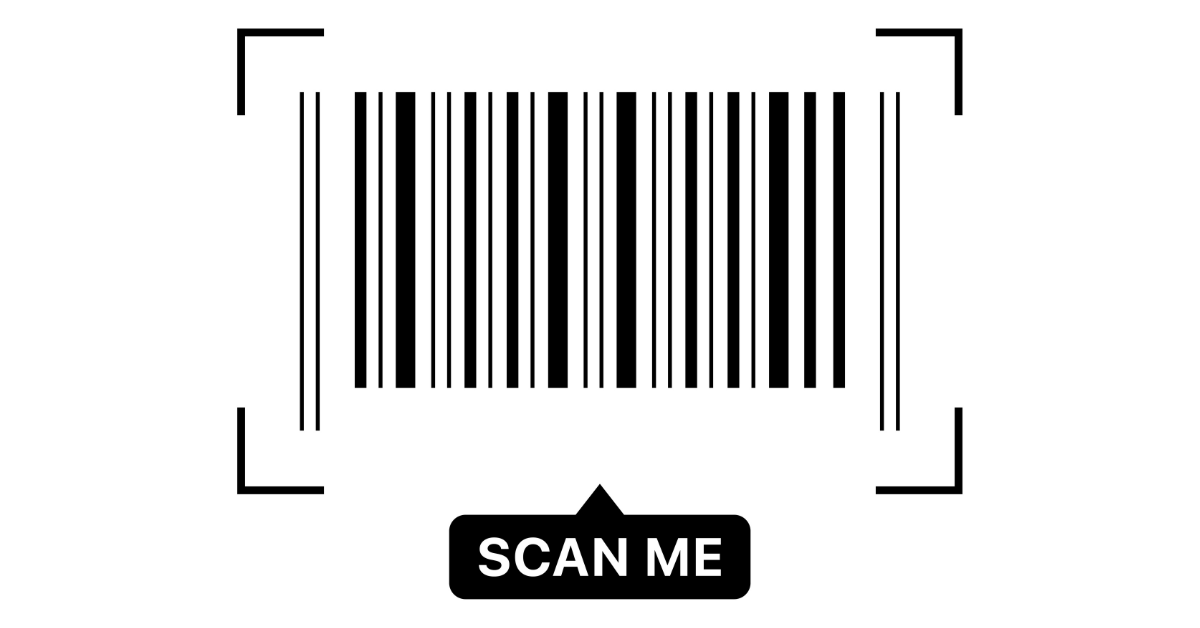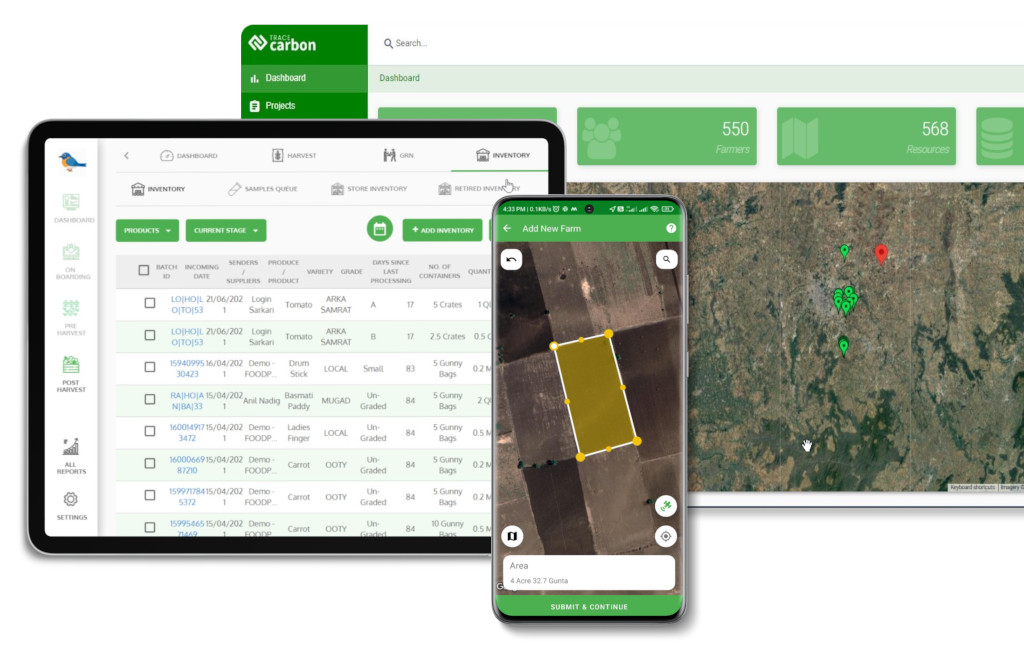Contact: +91 99725 24322 |
Menu
Menu
Quick summary: Learn how to implement GS1 traceability in your food supply chain with GTIN, GLN, SSCC, EPCIS. Step-by-step guide for compliance, recalls, and transparency.

Food businesses are under more pressure than ever. By adopting GS1 Traceability, food businesses achieve regulatory compliance, improve recall readiness, and build consumer trust through end-to-end visibility.
To implement GS1 Traceability in your food supply chain, start by mapping critical control points from farm to retail. Assign GS1 identifiers—GTIN for products, GLN for locations, and SSCC for logistics units—to ensure global consistency. Capture and share event data using EPCIS to record what, when, where, and why each step occurred. Integrate these standards with ERP or warehouse systems and train suppliers to provide data in GS1-compliant formats.
According to a recent survey, 73% of consumers say they are willing to pay more for products that are sustainably sourced and fully traceable (Source: Nielsen, 2021).
A single safety incident can trigger costly recalls, erode consumer trust, and even block access to key markets. At the same time, regulations like the U.S. FDA FSMA 204 and the EU’s evolving food law frameworks demand tighter documentation and faster reporting. Add growing consumer demand for sustainability and transparency, and traceability is no longer a “nice-to-have”—it’s a business-critical requirement.This is where GS1 Traceability comes in.
GS1 is the global language of supply chain data, best known for barcodes but now extending to identifiers like GTIN, GLN, SSCC, and event-sharing standards like EPCIS. Together, these tools provide a common framework that ensures products and data can be uniquely identified, tracked, and trusted—across any market, any system, any trading partner.
In this guide, we’ll give you a practical roadmap to implement GS1 Traceability in your food supply chain: from mapping your processes and adopting identifiers to capturing event data and integrating systems. Whether you’re a grower, processor, distributor, or retailer, these steps will help you not just meet compliance, but also reduce risk, cut inefficiencies, and build stronger relationships with both regulators and consumers.
Key Takeaways
GS1 Traceability is a globally recognized system that enables food businesses to identify, capture, and share supply chain data in a consistent and interoperable way. In practice, it means every product, location, and logistics unit is tagged with a standardized GS1 identifier—GTIN (Global Trade Item Number) for products, GLN (Global Location Number) for locations, and SSCC (Serial Shipping Container Code) for logistics units. Events like harvest, processing, shipping, and receiving are then logged in a common format using EPCIS (Electronic Product Code Information Services), so every trading partner can read and trust the same data.
Most companies think of traceability as “tracking goods internally.” GS1 goes further: it ensures data is interoperable across borders, industries, and IT systems. A farmer in Kenya, a distributor in Germany, and a retailer in the UK can all exchange product data in the same structure—making recalls faster, audits easier, and regulatory filings seamless.
GS1 traceability isn’t just about ticking regulatory boxes (like FSMA 204 in the U.S. or EUDR/CSRD in Europe). It unlocks business intelligence: connecting procurement, inventory, and cold chain performance into one data flow. It also enables consumer-facing transparency, like scanning a QR code on a chocolate bar to see farm origins—something increasingly demanded by younger, sustainability-conscious buyers.
Think of GS1 as the “API of the global food system.” Without a shared standard, every supplier, exporter, and importer would invent their own codes and formats, creating chaos. By speaking GS1, food businesses future-proof their supply chains for compliance, sustainability reporting, and even new models like digital product passports (DPPs).

Discover how integrating GS1 standards with traceability solutions can enhance supply chain transparency, boost compliance, and streamline operations.
Check out our detailed blogs on
to learn how to get started.
Food supply chains are under intense scrutiny. Regulations are tightening, buyers are demanding more transparency, and consumers want proof of safety and sustainability. That’s why GS1 traceability is no longer optional—it’s urgent.
Governments are raising the bar. In the U.S., FDA FSMA 204 requires food companies to maintain and share detailed traceability records within 24 hours. In the EU, regulators are tightening food safety law and aligning with sustainability frameworks like EUDR and CSRD, which require product-level visibility. GS1 standards provide a ready-made framework to meet these demands without reinventing your own system.
Major retailers and EU buyers are setting their own supplier requirements—many explicitly ask for GS1-based identifiers and records. If you can’t deliver data in a standardized format, you risk being cut out of procurement lists or seeing shipments delayed at customs. GS1 compliance isn’t just about passing audits; it’s about staying on the shelf.
Traceability isn’t only about external pressure—it’s about internal resilience. Companies that adopt GS1 can pinpoint affected batches instantly during recalls, reducing financial loss and brand damage. They gain supplier-level visibility that cuts fraud and errors. And by enabling transparency from farm to fork, they earn consumer trust, which increasingly drives brand loyalty and sales.
Many businesses see GS1 as a compliance burden. The smarter ones see it as a competitive edge. By standardizing data today, you’re not just meeting FSMA or EU law—you’re setting up for faster recalls, smoother buyer audits, better margins, and stronger consumer trust. In a market where trust is currency, GS1 makes you the supplier of choice.
TraceX undertook a Meat Traceability Project aimed at establishing an end-to-end traceability system for the chicken supply chain, in collaboration with GS1 India and a leading online grocery platform. The TraceX platform tracked the entire value chain, from broiler farms to consumers, ensuring transparency with GS1 standards such as GTINs and GLNs. Key events like farming, transportation, processing, and packaging were recorded on blockchain, ensuring accurate data and compliance. GS1-compliant barcodes on packaging enabled consumers to access verified product information, increasing trust in the quality and safety of the chicken products. This project showcases how integrating blockchain and GS1 standards builds transparency and boosts consumer confidence.
GS1 Traceability is best implemented as a structured workflow. Each step builds the foundation for the next, ensuring that data flows consistently from farm to retail shelf.
Start by mapping your end-to-end flow—from farms and co-ops to processors, warehouses, distributors, and retailers. Identify where product changes hands or changes state (harvest, processing, packaging, shipping). These are your Critical Tracking Events (CTEs). Then list the Key Data Elements (KDEs) that must be recorded at each event (e.g., product ID, location, timestamp, lot number).
Outcome: A clear blueprint showing where to capture and record data.
GS1 traceability depends on unique, standardized identifiers:
Outcome: No product, case, or pallet moves without a GS1 code.
Use EPCIS (Electronic Product Code Information Services) to record the “what, when, where, and why” of each event. For example:
Outcome: A digital trail showing every event in a product’s journey.
Link your ERP, WMS, MES, or farm management apps with GS1 data exchange. Ensure barcode or RFID scanners are capturing identifiers in real-time, and events flow automatically into your repository. This reduces manual data entry and errors.
Outcome: A seamless data pipeline across systems and partners.
GS1’s power lies in interoperability. Enable trading partners to access standardized, auditable data through secure EPCIS sharing or data pools. Run validations to ensure identifiers, event data, and timestamps match expected formats.
Outcome: Partners can plug into your data and trust it instantly.
Traceability succeeds only if people use it consistently. Train farmers, suppliers, warehouse staff, and QA teams on how to capture, scan, and upload GS1 data. Provide SOPs, templates, and quick guides to reduce errors and make adoption easy.
Outcome: A resilient, repeatable workflow across the entire chain.
Many suppliers and processors still rely on handwritten logs, spreadsheets, or PDFs. These records are prone to errors, difficult to audit, and nearly impossible to consolidate at scale. In a recall or compliance check, finding accurate lot-level data can take days instead of hours—creating both financial and reputational risks.
Each actor—farmers, transporters, processors, distributors, retailers—often uses their own systems (if any). Data is stored in silos, with no interoperability. This fragmentation means companies can track their “internal” operations but struggle to stitch together a farm-to-fork traceability trail. Regulators and buyers increasingly demand end-to-end visibility, and without it, shipments risk being flagged or rejected.
Without GS1 identifiers or a common schema, products are tracked with local codes or ad hoc labels. This makes it impossible to align lots, SKUs, or shipment units across partners. The lack of standardization not only slows down compliance (FDA FSMA, EU EUDR, etc.) but also increases the cost of integration with retailers and customs systems.
Today’s consumers want to know where their food comes from—whether cocoa is deforestation-free, whether seafood is sustainably sourced, or whether fresh produce is local. Without robust traceability, brands can’t confidently share origin data. This erodes trust and leaves companies vulnerable to greenwashing accusations.
These challenges—manual processes, fragmented data, lack of standards, and limited consumer visibility—are exactly what GS1 traceability is designed to solve. By standardizing identifiers and event-sharing, food businesses can move from reactive record-keeping to proactive, trust-building transparency.
TraceX food traceability solutions help businesses achieve GS1 traceability by combining blockchain security with GS1 identifiers (GTIN, GLN, SSCC) and EPCIS event logging. The platform captures end-to-end supply chain data, standardizes product and location codes, and generates QR codes for instant access—ensuring compliance, faster recalls, and transparent farm-to-fork visibility.
TraceX combines blockchain immutability with GS1 standards to deliver a secure, interoperable traceability system. Every transaction—whether it’s farm-level input capture, processing, or logistics—is recorded on a tamper-proof ledger. With GS1 identifiers (GTIN, GLN, SSCC) built in, the platform ensures your data aligns with global supply chain standards, making it audit-ready and universally shareable.
From seed purchase and planting to distribution and retail, TraceX captures event data across the entire supply chain. Farmers, processors, distributors, and retailers all contribute standardized records—covering origin, inputs, handling, and movement. This creates a continuous digital thread that eliminates silos and replaces manual record-keeping with real-time, verifiable data.
With GS1-compliant IDs and EPCIS event logging, TraceX tracks the “what, when, where, why” of every unit or lot. This ensures SKU-level traceability and allows rapid root-cause analysis during recalls. Instead of searching through fragmented records, businesses can instantly pull up the lifecycle of any batch.
Every product unit can be linked to a QR code, enabling instant access to traceability data.
Integrating GS1 standards with traceability solutions is the key to future-proofing your business. Whether you’re focusing on regulatory compliance, consumer trust, or sustainability goals, GS1 standards offer the efficiency, transparency, and scalability needed to stay competitive in a global market.
Dive deeper into the best practices, technology solutions, and real-world examples in our latest blogs
Explore
Demystifying food safety regulations
Buyer’s guide to food traceability solutions
QR code technologies driving Transparency and Trust
GS1 traceability is a standardized system using identifiers like GTIN, GLN, and SSCC with EPCIS event logging to track food products end-to-end.
Begin by mapping your supply chain, adopting GS1 identifiers, capturing events with EPCIS, integrating ERP/WMS, and training suppliers for consistent adoption.
It ensures compliance with food safety laws (e.g., FSMA 204, EU food law), speeds up recalls, improves supply chain transparency, and builds consumer trust.
